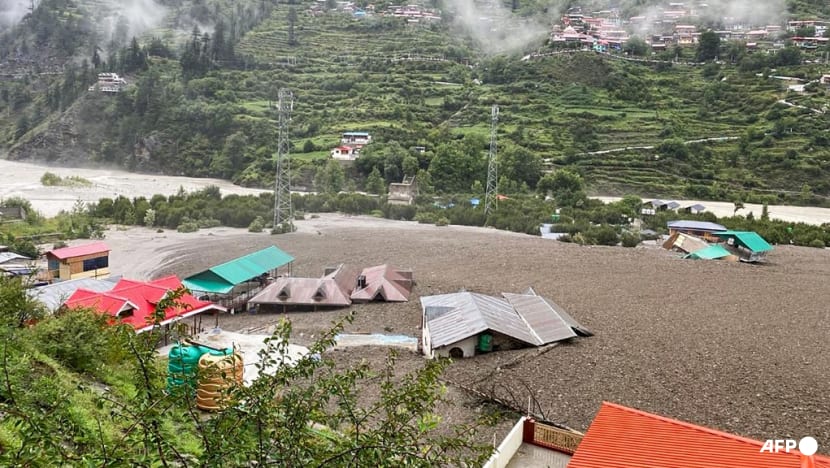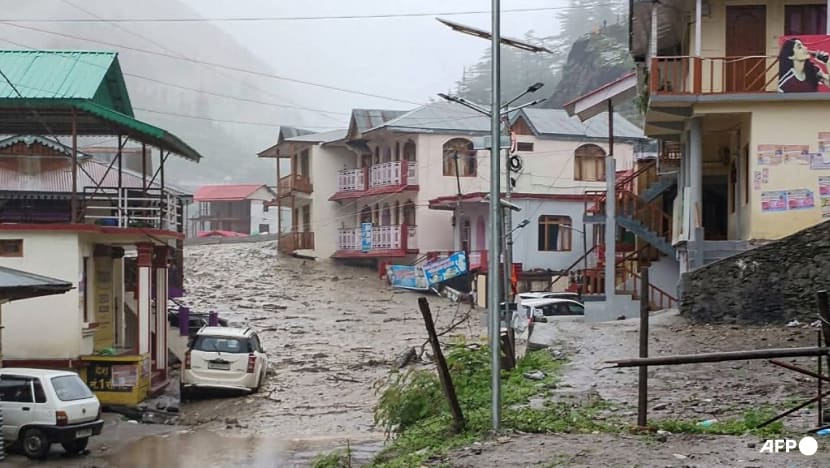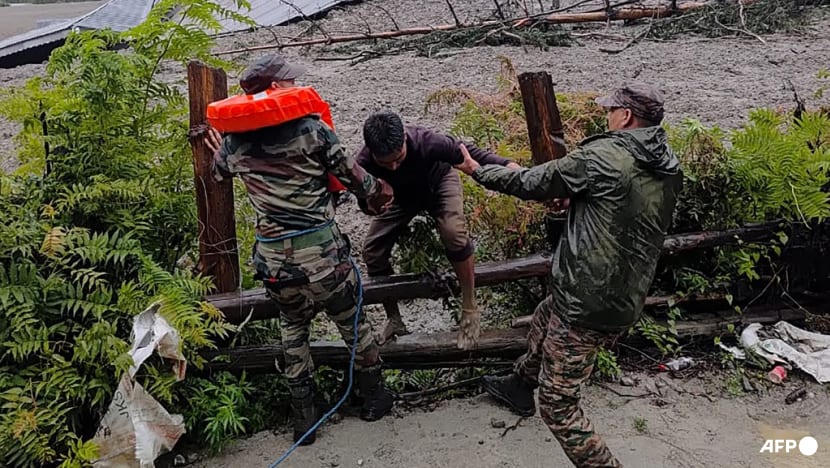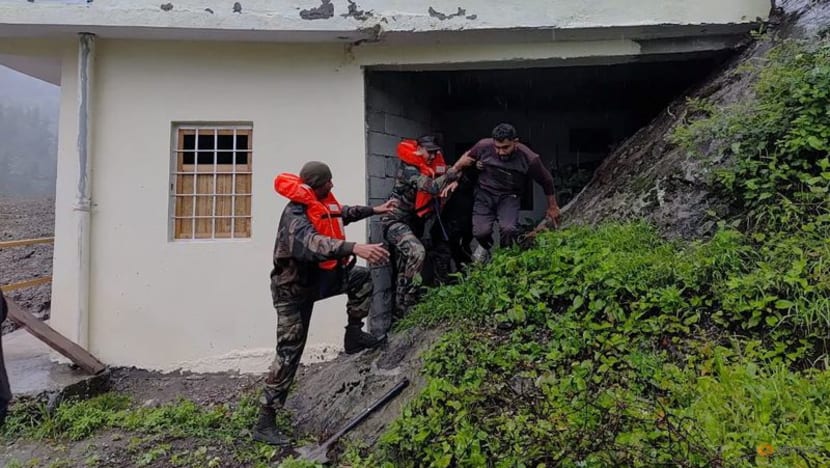Four dead, 100 missing after flash flood washes out Indian Himalayan town

This handout photograph taken on Aug 5, 2025, and released by the Indian Army shows residential buildings partially submerged in sludge after a cloudburst caused a massive mudslide in India's Uttarakhand state. (Photo: AFP/Indian Army)
DEHRADUN, India: A flash flood driving a torrent of mud smashed into a town in India's Himalayan region on Tuesday (Aug 5), killing at least four people with around 100 others missing, including 11 soldiers.
The roaring waters tore down a narrow mountain valley, demolishing buildings as the flood barrelled into the town of Dharali in Uttarakhand state.
"It is a serious situation," Minister of State for Defence Sanjay Seth told the Press Trust of India (PTI) news agency.
"We have received information about four deaths and around 100 people missing. We pray for their safety."
Videos broadcast on Indian media showed a terrifying surge of muddy water sweeping away multi-storey apartment blocks in the tourist region.
Several people could be seen running before being engulfed by the dark waves of debris that uprooted entire buildings.
Uttarakhand State Chief Minister Pushkar Singh Dhami said rescue teams had been deployed "on a war footing".

"WAKE-UP CALL"
On Wednesday, the Indian army brought in sniffer dogs, drones and heavy earth-moving equipment to search for the missing.
"Additional army columns, along with army tracker dogs, drones, logistic drones, earthmoving equipment etc., have been moved ... to hasten the efforts", the army said on Wednesday.
Military helicopters were working to bring in "essential supplies, medicines and (for the) evacuation of the marooned", it added.
"A massive mudslide struck Dharali ... triggering a sudden flow of debris and water through the settlement," the army said.

Images released by the army, taken from the site after the main torrent had passed, showed a river of slow-moving mud.
A wide swath of the town was swamped by deep debris. In places, the mud lapped at the rooftops of houses.
State Disaster Response Force commander Arpan Yaduvanshi said the mud was 15m deep in places, swamping some buildings entirely.
"Search and rescue efforts are ongoing, with all available resources being deployed to locate and evacuate any remaining stranded persons," army spokesman Suneel Bartwal said.
Prime Minister Narendra Modi expressed his condolences in a statement, and said that "no stone is being left unturned in providing assistance".
Chief Minister Dhami said the flood was caused by a sudden and intense "cloudburst", calling the destruction "extremely sad and distressing".
Cloudbursts, which are sudden, intense downpours over small areas, have the potential to wreak havoc by causing intense flooding and landslides, impacting thousands of people in mountainous regions.

The India Meteorological Department issued a red alert warning for the area, saying it had recorded "extremely heavy" rainfall of around 21cm in isolated parts of Uttarakhand.
Deadly floods and landslides are common during the monsoon season from June to September, but experts say climate change, coupled with urbanisation, is increasing their frequency and severity.
The United Nations' World Meteorological Organization said last year that increasingly intense floods and droughts are a "distress signal" of what is to come as climate change makes the planet's water cycle ever more unpredictable.
"The devastating loss ... must be our final wake-up call", said climate activist Harjeet Singh, from the Satat Sampada Climate Foundation in New Delhi.
"This tragedy is a deadly cocktail", he added.
"Global warming is super-charging our monsoons with extreme rain, while on the ground, our own policies of cutting hills; unscientific, unsustainable and reckless construction and choking rivers for so-called 'development' are destroying our natural defences."














